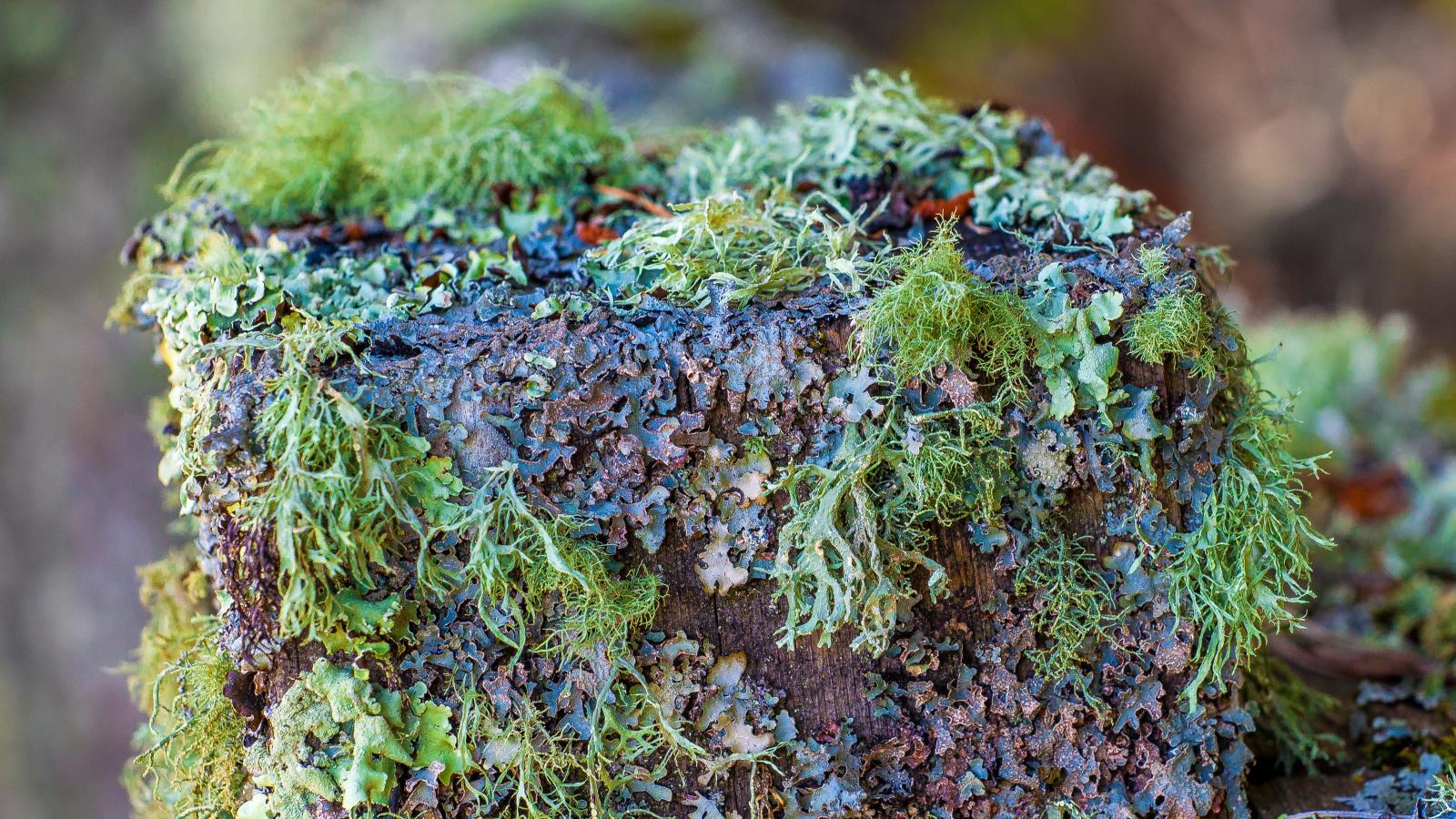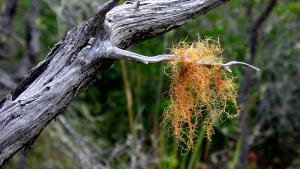From the foggy coastal redwood forest to the dry oak woodland, the San Francisco Bay Area supports a diversity of lichen species. Often overlooked but truly fascinating, lichen invite us to slow down and hone in on the complexity of community. The thalli, or bodies, of these organisms are a combination of one or more fungi and a photosynthetic partner, typically algae but occasionally cyanobacteria.
Lichen symbiosis has a long history. Paleobotany records suggest that lichen symbiosis was an evolutionary stepping stone that allowed individual bacteria, fungi and plant species to colonize previously uninhabitable terrestrial areas. Alongside other pioneer species, some groups of lichen can become established in barren landscapes, such as cooled lava flows. Over time, their complex chemistry aids in the weathering of the rock substrate and the formation of soil, a process which allows all of life to flourish.
Here are a few interesting facts:
Lichens are slow growing, expanding by millimeters even in years of favorable conditions.
Historically believed to be a symbiosis of one filamentous fungi and alga, molecular studies have discovered additional associations with yeast-forming fungi, viruses and protists.
Lichen do not have a root system, instead they absorb nutrients directly from the atmosphere.
They are extremely drought-tolerate and resilient, responding quickly to the return of moisture even after several years of dormancy.
Lichens are known as an indicator species and used in biomonitoring studies for air quality. The cortex, or upper part of the body, readily takes up atmospheric particles and can accumulate compounds such as lead, nitrogen and sulfur dioxide.
They boast a complex chemistry, forming antibiotic and antimicrobial compounds that deter pathogens and herbivores alike.
Cultures around the world have traditionally, and continue to use, lichen as a medicine, perfume, food and dye source.
This unique ability to thrive in areas that many species cannot has contributed to their global distribution. Lichens are found on every continent, establishing populations in deserts, rainforests, freshwater streams and Arctic tundra. Recent studies in astrobiology have even looked at how lichen can tolerate space and Mars-like conditions! Here are a handful of the species that call Midpen preserves home.








